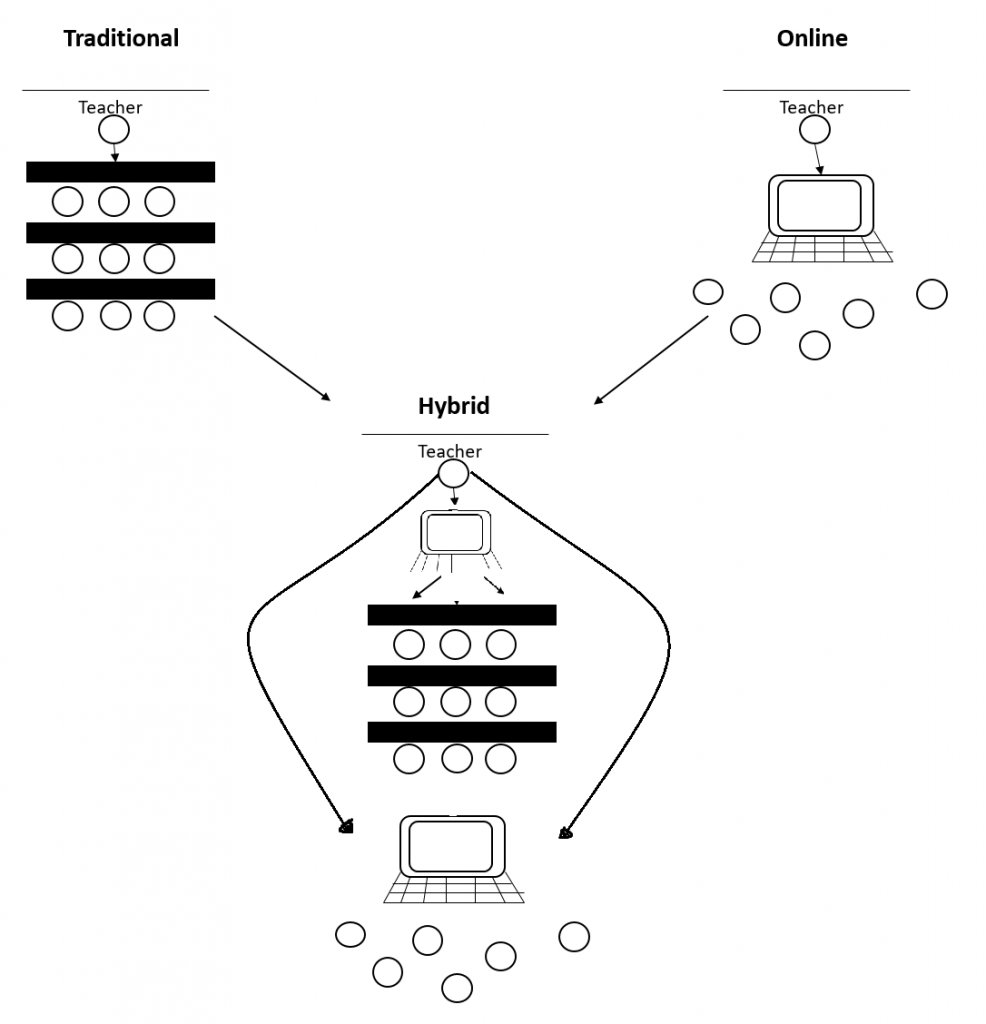10.4 Communicative Media and Technology in Education
Within this modern environment, communication has come a long way since the days of Elton Mayo and his Hawthorne Study. The advancement of technology has given people the ability to communicate locally and globally faster than ever. For this section, media will generally be described as information displayed from a source (i.e. leader, manager, educator etc.) through a medium (i.e. oral communication, written communication, and nonverbal communication) towards the receivers (i.e. learners, subordinates, students, etc.). Management communication in leadership relations are important with the goal of communicating as well as possible to subordinates[8]. This will help with the communicable aspects in transmitting technology within educational realms.

One example of media is the broadcast. The anchor on the news station reports news to millions of homes at 6pm and 11pm. Similarly, this is the definition of broadcast media transmission as it follows a one-to-many approach[8]. A more collaborative atmosphere is communicative media transmission , which is a many-to-many approach[8], where transmission comes from a source and from other transmitters. One example is when there is a town-hall debate for a political office that invites cooperation from the audience, or a live event on YouTube. Not only are the candidates transmitting information, but the individuals in the crowd are transmitting information to the candidate and other audience members. Figure 3 shows a visual between broadcast and communicative media.

This shows how technology is introduced into learning organizations, acting as the new medium between the source and the receiver. The electronic grapevine, or the grouping of different electronic mediums, connects organizational members in many different ways. One example is how most modern phones have the ability to check e-mail. This creates an electronic grapevine from the office to the home, since e-mail can be available ion many devices. Some might say that this is a positive innovation, because the nature of a fast-moving twenty-first-century environment, while another might say that with this grapevine, there is never escape from work, which can be detrimental.
In learning organizations, such as schools, the advancement of technological communication, from online textbooks, to quick access of online journal articles, and the use of computerized technology has and will continue to be present. One example of teaching and learning that has used the characteristics of both broadcast media and communicative media transmission is the use of the hybrid classroom. Hybrid classrooms, as described by Penn State University, is a transmission approach to delivering course content either separately or with face-face and online connections[10]. The advantages to hybrid classrooms, or hybrid learning, are that it reduces the seat time of individuals, and students can engage in authentic and collaborative learning experiences[10]. In addition, it accommodates the hours of adult learners, allowing more flexibility with time. On the contrary, hybrid teaching can use a lot more resources than the traditional face-to-face method, and still be less integrative, depending on class size. However, the fact that an individual can choose to experience the class traditionally through a face-to-face method, or with divergence through an online method is completely up to the students learning and their objectives toward learning.

Regardless of the media or medium, it must be beneficial to all learners, and help foster learning effectively. Depending on the type of study, both lecture and online learning may not be the best forms of communication transmission. For example, most high school music classes generally have brief lecturing and hardly any online component. Predominantly, music classes are experiential and authentic, by working through sheet music and playing the instrument collaboratively with others in the class. Leaders must find the most effective way to harness the learning experience, and decide if the hybrid method will deliver learning effectively.
Activity: Elephant and the Blind Men
- Read the poem, “Elephant and the Blind Men” at https://www.jainworld.com/literature/story25.htm
- Answer the questions below.
- Consider working with a partner or in a group.
Follows a one-to-many approach (i.e. a newscast)
Follows a many-to-many approach (i.e. YouTube Live Stream)
the grouping of different electronic mediums connecting organizational members in many different ways
A transmission approach to delivering course content either separately or with connection face-face and online

